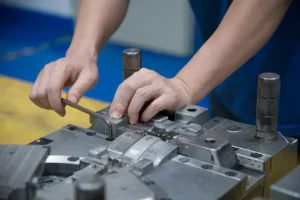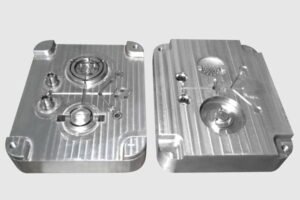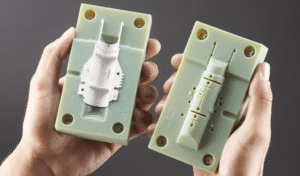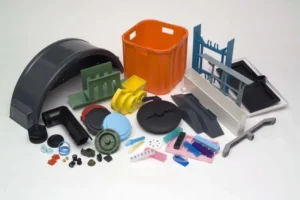Introduction

The mold manufacturing industry plays a critical role in the production of a wide array of products, from automotive parts to medical devices. However, mold manufacturers face numerous challenges that test their ability to remain competitive and meet market demands. With the rapid advancements in technology, increasing demand for precision, and pressure to reduce costs, staying ahead of these challenges requires strategic planning, innovation, and adaptability.
This article explores the common hurdles mold manufacturers encounter and the strategies they employ to overcome them, ensuring that they continue to thrive in an increasingly complex and demanding industry.
1. The Pressure of Increasing Demand for Precision and Quality
As industries such as automotive, aerospace, and consumer electronics push for higher performance and precision, mold manufacturers must keep up with these evolving expectations. Molds are expected to produce parts with tight tolerances, flawless finishes, and enhanced durability, all while maintaining cost-effectiveness. Meeting these requirements is a significant challenge, as a single defect in the mold or the final part can lead to production delays and costly rework.
How Manufacturers Are Tackling This:
- Adoption of Advanced Simulation Software: Mold manufacturers are increasingly turning to simulation software to predict how a mold will perform during production. By simulating factors like material flow, cooling rates, and pressure distribution, manufacturers can identify potential issues early and optimize the mold design for better performance and reduced defects.
- High-Precision CNC Machining: With the need for greater accuracy, manufacturers have invested in CNC machining technology. This allows for the creation of molds with high tolerance levels and consistency, reducing errors and improving the quality of molded parts.
- Material Innovation: The selection of mold materials plays a critical role in achieving the desired quality. Materials like H13 steel, S136 stainless steel, and tungsten carbide are often used for their high resistance to wear, heat, and corrosion. Additionally, the use of advanced coatings such as nitriding or TiN can further improve mold performance and lifespan.
2. Rising Pressure to Reduce Costs
In a highly competitive market, mold manufacturers are constantly under pressure to lower production costs while maintaining quality standards. This is especially challenging as raw material prices fluctuate, labor costs rise, and energy consumption becomes more expensive.
Strategies to Overcome Cost Challenges:
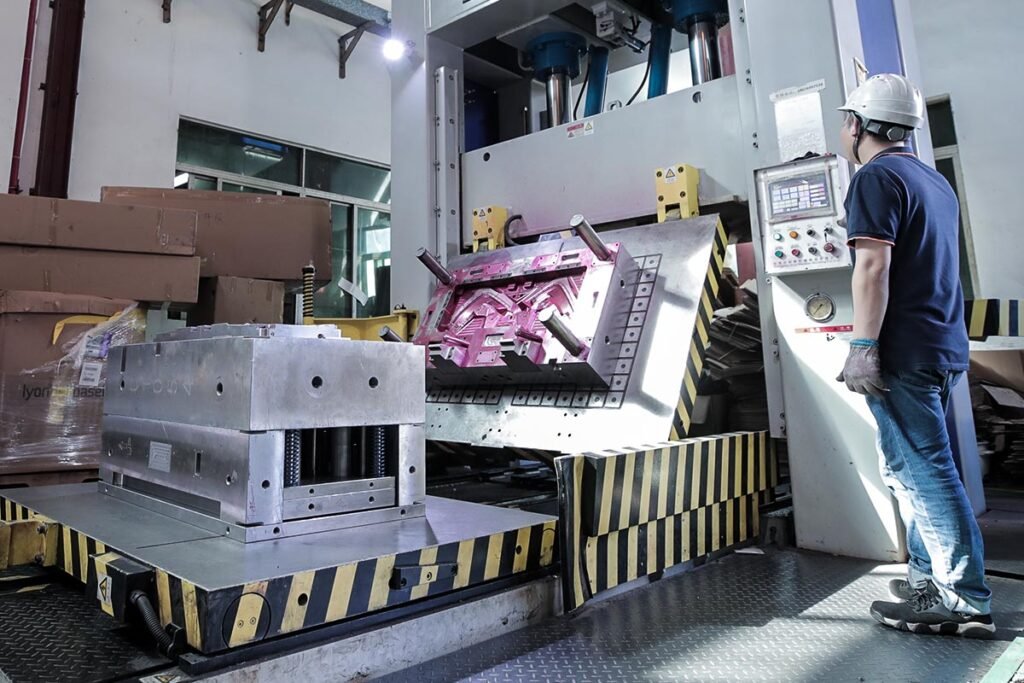
- Efficient Resource Utilization: Manufacturers are adopting lean manufacturing principles to eliminate waste and improve efficiency. By optimizing production workflows, reducing excess material use, and minimizing machine downtime, mold manufacturers can achieve cost savings while maintaining quality.
- Outsourcing and Automation: Many manufacturers are turning to outsourcing certain processes to lower labor costs. Additionally, robotic automation is being integrated into the production line to reduce human error, increase throughput, and decrease operating costs.
- Prototyping and Rapid Tooling: By using rapid tooling methods, manufacturers can reduce lead times and avoid the high costs associated with traditional mold-making. This is particularly valuable in industries that require rapid prototyping and quick turnaround times, such as the consumer electronics and medical devices sectors.
3. The Challenge of Managing Lead Times
Long lead times are a constant challenge for mold manufacturers, particularly when complex or highly specialized molds are involved. Extended lead times not only delay production but also affect the ability of manufacturers to respond to customer demands in a timely manner.
How Manufacturers Are Addressing Lead Time Challenges:
- Adoption of Rapid Tooling and Additive Manufacturing: 3D printing and additive manufacturing have revolutionized the mold-making process by allowing manufacturers to create rapid prototypes and even functional molds in a fraction of the time compared to traditional methods. This significantly shortens the product development cycle, enabling faster time-to-market.
- Improved Project Management: By implementing project management software and streamlined communication systems, mold manufacturers can better coordinate resources, manage schedules, and ensure that projects stay on track. This approach helps reduce bottlenecks and optimize the use of production time.
- Collaborative Relationships with Suppliers: To further streamline lead times, manufacturers are strengthening their relationships with suppliers to ensure a more reliable and faster supply of raw materials. Vendor-managed inventories (VMI) and just-in-time (JIT) delivery systems are also being employed to reduce material shortages and improve production flow.
4. Handling Technological Advancements and Automation Integration
The integration of smart technologies, IoT (Internet of Things), and automation in mold manufacturing is becoming increasingly common. While these technologies offer significant benefits in terms of efficiency, precision, and cost savings, their implementation comes with challenges such as the high initial investment, staff training, and integration into existing systems.
How Manufacturers Are Adapting:
- Smart Mold Technologies: Many manufacturers are embracing smart mold technology, which integrates sensors into molds to monitor critical parameters such as temperature, pressure, and wear during production. This data is collected and analyzed in real time, allowing manufacturers to optimize the molding process and reduce downtime.
- Predictive Maintenance: With the help of predictive maintenance software, manufacturers can now anticipate potential failures in the molds before they happen, reducing unplanned downtime and extending mold life. This technology uses machine learning algorithms to analyze historical data and predict when maintenance is needed.
- Employee Training and Upskilling: To successfully integrate these technologies, manufacturers are investing in employee training programs. Training workers to operate advanced machinery, understand data analytics, and work with automation systems ensures that the workforce remains competitive and skilled in the latest manufacturing techniques.
5. Environmental and Sustainability Concerns
As global environmental regulations become stricter, mold manufacturers must adapt to minimize their environmental impact. From energy consumption to waste management, the mold-making process can generate significant ecological footprints. Sustainability has thus become a crucial aspect of mold manufacturing.
Sustainable Practices Mold Manufacturers Are Adopting:
- Energy-Efficient Machinery: Manufacturers are investing in energy-efficient CNC machines, electric presses, and other equipment designed to reduce energy consumption during production. This not only helps reduce operational costs but also aligns with growing environmental standards.
- Recyclable Materials: The industry is shifting towards using recyclable materials for mold construction, such as recyclable steel alloys, to reduce waste. Additionally, using eco-friendly coatings and cleaning agents reduces the environmental impact of mold production.
- Closed-Loop Systems: To minimize waste, some manufacturers have adopted closed-loop cooling systems that recycle water and chemicals used during mold cooling, reducing water consumption and minimizing chemical waste.
6. The Role of Globalization and Supply Chain Challenges
With the rise of global manufacturing, mold manufacturers must now manage complex supply chains that stretch across multiple countries. Fluctuating material prices, import/export tariffs, and geopolitical tensions can cause disruptions in the supply chain, leading to delays and cost increases.
How Manufacturers Are Navigating Supply Chain Challenges:
- Diversified Supply Chains: To mitigate risk, many manufacturers are diversifying their suppliers and sourcing materials from multiple regions. This reduces dependence on a single supplier and helps maintain steady production even when one supply chain is disrupted.
- Localizing Production: Some mold manufacturers are responding to global supply chain issues by localizing production closer to their target markets. This strategy helps reduce transportation costs, speed up delivery times, and minimize the impact of tariffs.
- Blockchain for Transparency: The adoption of blockchain technology is gaining traction in mold manufacturing for its ability to provide end-to-end transparency in the supply chain. This technology allows manufacturers to track the origin and movement of materials, reducing the risk of counterfeiting and ensuring the integrity of the final product.
Frequently Asked Questions (FAQs)
Q1: How do mold manufacturers reduce production costs while maintaining quality?
A: By optimizing processes through automation, lean manufacturing principles, and material innovation, mold manufacturers can reduce costs without compromising quality.
Q2: What is the most challenging aspect of mold manufacturing?
A: Managing precision while minimizing costs and lead times is often the most challenging aspect of mold manufacturing, especially when dealing with complex designs and high-volume runs.
Q3: How is technology changing the mold-making industry?
A: Technology, including CNC machining, 3D printing, and smart mold systems, is significantly improving accuracy, efficiency, and the ability to predict and prevent mold failures.
Q4: What role do coatings play in mold durability?
A: Coatings like nitriding and TiN improve wear resistance and reduce friction, leading to longer mold life and better part quality.
Q5: How do environmental concerns affect mold manufacturing?
A: Mold manufacturers are adopting energy-efficient practices, recyclable materials, and closed-loop systems to meet environmental regulations and reduce their ecological footprint.
Sources:
- MoldMaking Technology – “Innovations in Mold Materials and Processes”
- Modern Machine Shop – “Automation in Mold Manufacturing”
- Plastics Technology – “Advanced Coatings for Molds”
- Industry Week – “Global Supply Chain Challenges in Manufacturing”
- Harvard Business Review – “The Impact of Smart Manufacturing on Traditional Industries”


